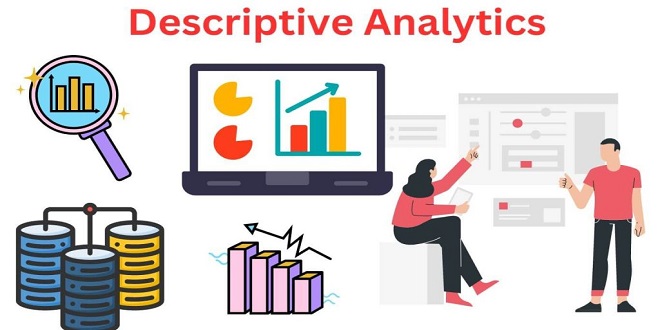In the vast world of data analysis, understanding and interpreting volumes of information is paramount. Among the various methods of analytics, the concept of descriptive analytics provides a vital foundation. Detailing what has happened in the past and explaining why it happened, descriptive analytics offers businesses insightful retrospection.
It plays a crucial part in detailed analysis, guiding the creation and application of both predictive (What might happen?) and prescriptive analytics (What should we do?). It encompasses the methods used to interpret historical data, thereby leading to intelligent predictions and informed decision-making.
Breaking down the complexities, we’ll explore the nitty-gritty of descriptive analytics to understand this concept in its full glory. What are its processes, applications, key elements, and tools, and how does it bridge its function with predictive analysis?
If you ever find yourself intrigued by the challenges and opportunities presented by integrating descriptive analytics within the business sphere, this reading is for you. Keep reading to delve deeper into the realm of descriptive analytics.
Uncovering the Process of Descriptive Analytics
Alt text: Four people are huddled around three desktop computers analyzing data.
Implementing descriptive analytics doesn’t happen overnight. It is a well-orchestrated process involving several steps designed to translate raw data into meaningful insights. The stages involved include collection, data cleaning, integration, analysis, and data visualization.
Data collection critically steers the process. Everything from customer feedback to online reviews and surveys form the foundation for descriptive analytics.
The next stage involves cleaning the compiled data. This means closely examining the data for errors, inaccuracies, or inconsistencies and rectifying them. The data must also be integrated; meaning bringing together data from disparate sources and creating a unified view.
Following integration, the data analysis begins. At this stage, organizations rely on various statistical and visualization methods to interpret the raw data, translate business activities, and monitor performance. The extensive process enables organizations to summarize and represent complex data in a simple, understandable format.
Roles and Importance of Descriptive Analytics in Business
Alt text: A man is sitting at a desk analyzing data on a desktop computer with three monitors.
Descriptive analytics’ role and importance in businesses cannot be overstated. Whether it’s the shopping habits of consumers, website traffic, geographical data, or sales trends, businesses can use descriptive analytics to gauge a richer understanding of their operational environment.
This knowledge helps in identifying weaknesses and optimizing strengths. Moreover, it aids in forecasting future trends through the lens of historical data. Markets are volatile and businesses need to adapt quickly to stay competitive. Descriptive analytics provides the solid bedrock of data upon which these transformations can be built.
The Vast Range of Applications for Descriptive Analytics
The versatility of descriptive analytics makes it applicable across a wide spectrum of industries and domains. From marketing and sports management to healthcare and finance, predictive analytics continue to transform operations, processes, and strategies.
In marketing, descriptive analytics can capture consumer behavior, determine effective marketing strategies, and understand customer preferences. This information guides businesses in their effort to enhance customer experience and loyalty and increase revenue.
Similarly, in sports management, it is used to analyze player performance, inform recruitment decisions, and enhance team strategies. Healthcare providers use descriptive analytics for patient data analysis, tracking disease patterns and health outcomes.
On the financial front, banks utilize descriptive analytics for risk analysis, fraud detection, and portfolio management.
Key Elements of Descriptive Analytics
The core elements of descriptive analytics comprise data aggregation and data mining. Aggregation is a process that simplifies the data by representing it in summary form. This could involve converting raw data into averages, totals, or other statistical measures.
Data mining, on the other hand, involves the processing of datasets to discover patterns and relationships. It enables businesses to uncover hidden insights and trends that wouldn’t be obvious from looking at the raw data.
Another key component of descriptive analytics is data visualization. Visualization serves as the final leg in the process where the processed data is represented graphically for easy interpretation.
Overall, descriptive analytics not only informs businesses of their past but also leads them confidently into the future.
Teluguwap offers a diverse range of Telugu music, movies, and more, making it a go-to platform for Telugu entertainment enthusiasts. With its user-friendly interface and vast collection, it provides a convenient and immersive experience. Whether you are a fan of classic melodies or the latest blockbuster hits, Teluguwap has got you covered.
 Jobsearchdone.com Top News Share Website
Jobsearchdone.com Top News Share Website




